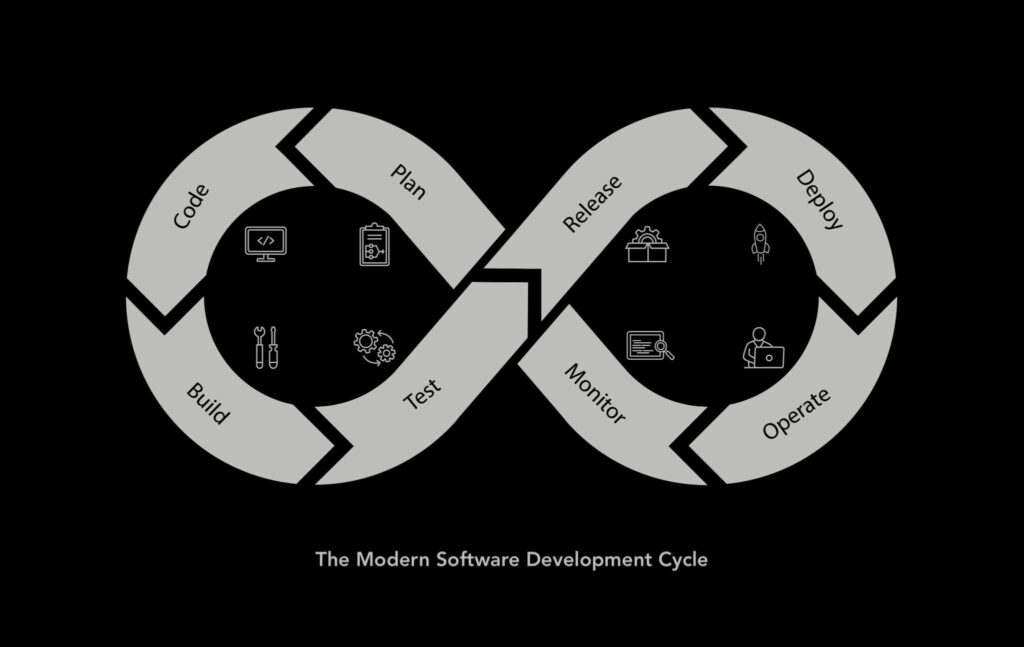Is it time to go with scriptless test automation? Ask yourself, are you:
- still writing hundreds of lines of code just to test a small change?
- scrambling at the last minute to get those remaining stubborn test classes to pass?
- having a hard time freeing up resources to make quick changes?
If so, now is an excellent time to consider going scriptless. Organizations across the industry are saving time and money—and going to market faster—by improving the way they test applications, especially by turning to no-code and scriptless solutions.
If you’re still writing test scripts and turning to development resources to refactor test code every time you make changes, there’s a better way: Scriptless testing allows testers to create end-to-end test automation without writing a single line of code.
What does it mean to have scriptless test automation?
To be scriptless means to be code-free. A natural development of the process of abstraction, instead of writing test classes in Java, Python, or whatever OOP language, a tool writes the code for you while you interact with a declarative UI to build your test automation. Currently, the most common means of producing test automation is by writing test methods, putting them in a file repository, and meticulously managing all of them.
This often includes sequencing test methods, setting up test data and environments, mocking and stubbing services, and the complex DevOps that goes with managing change. Scriptless test automation saves you the headache. By abstracting the tedious and technical details, you can focus on building test automation that scales.
How does scriptless test automation work?
Scriptless test automation is usually managed through record and playback. This means your actions are recorded as you interact with the application, convert into code, and play it back as an automated test. The test identifies the elements, as well as the location of the elements you interact with.
The automation can be saved, reused, and put into a library to build your test automation. Every interaction (think click, swipe, hold) is recorded. QA will also define assertions by indicating expected results. While these actions are recorded, they’re converted to code-based scripts needed to run the test automation.
Most scriptless test automation starts at record and playback. With open source tools like Selenium, testers can record tests and use them as a base to build more robust test automation in code.
Modern scriptless test automation takes it a step further, abstracting the reliance on code completely. By leveraging machine learning and natural language processing, scriptless automation tools can make suggestions, refractor, or even write test scripts automatically without any interaction at all.
For example, the Sofy testing automation platform allows you to grab a real device, or use Sofy’s Real Device Lab, record a manual test, and instantly convert it to an automated test that can be used across devices. Sofy also takes it a step further by enabling testers to create automated test templates to easily build off more functionality.

Scriptless test automation and scriptless regression testing
It’s not just test creation that’s going scriptless, it’s also becoming easier to regression test. Using CI/CD tools, Sofy will analyze your code base whenever changes are introduced to your repository and notify you of impacted tests.
This way, you can stop wasting time tracking down dependencies or running all tests at the same time. Sofy will also recommend changes to your tests to help accommodate your application updates.
Why should you go scriptless?
Is scriptless right for you? The quick answer is, probably. But here are a few indicators that it’s time to consider making the switch:
1. Difficulty organizing a coherent test structure
Between the multiple projects, repositories, and use cases, it’s easy to get lost in the noise. With Sofy (and other scriptless platforms), your tests are stored with the platform under your project, easily accessible. Maintenance is easier too. Sofy identifies when changes are made to the code-base and can automatically perform regression testing and even update existing test automation.
2. Hard to find resources who understand our stack
We know that it’s hard to find talent and, once found, harder still to keep it. QA is a specialized skill. There are multiple frameworks and languages. To make a good hire, you have to find someone who is experienced in QA, they also have to be familiar with your tech stack to be able to add value. With a scriptless automation tool, the learning curve is much more manageable. Your talent doesn’t have to be experts in your stack and can focus on making good tests. Scriptless platforms allow testers to focus on creating good tests.
3. Missing release deadlines
Are regression issues preventing you from hitting deadlines? You plan a release, and send out communication, only to find QA issues at late stages of development with days to go. More often than not, this is caused by a lack of alignment, and a failure to integrate continuous testing. While continuous testing isn’t unique to scriptless test automation, native Integrations with CI/CD tools like Jenkins make it that much easier.
4. Inadequate ability to test on multiple devices
Today, mobile users use literally hundreds of different devices, and that also means different operating systems, different versions, and different configurations. To achieve success, modern mobile testing must consider all user experiences, not just the most common. It’s not easy to acquire and test on real devices on your own, and emulators don’t do the trick. Sofy, for example, offers a Real Device Lab that enables you to acquire any device, installed your application, and immediately start testing. Once you’ve completed your test, you can convert it to an automated test and run it on any device.
5. Challenges at scale
Many organizations find themselves struggling once development picks up beyond the organization’s standard pace. Developer resources and bandwidth may fluctuate, but testing resources don’t change, creating a backlog of untested changes. Scriptless automation makes it easy to reuse and templatize existing test cases to build on. In turn, creating test automation is much quicker and testers are prepared for different demands.
Conclusion
The benefits of going scriptless continue to entice organizations into abandoning the old, labor-heavy testing paradigm. Testers continue to move toward a more scalable and lightweight framework that’s suitable for a wider range of skill sets.
Rather than being restrictive, the abstraction of scriptless automation gives organizations more flexibility to manage changes and scale to new demands without adding additional resources. Want to see what scriptless test automation can do for you? Give Sofy a try.
Disclaimer: The views and opinions expressed above are those of the contributor and do not necessarily represent or reflect the official beliefs or positions of Sofy.









